10 automotive marriages made in heaven
This (and every) Valentine’s Day, we take a moment to celebrate two becoming one. We buy cards, chocolates, and dozens of roses to mark the couplings which lead to a successful and long-lasting relationships.
In the car industry there’s plenty to cheer as well, as these ten happy manufacturer marriages prove.
Toyota and Subaru
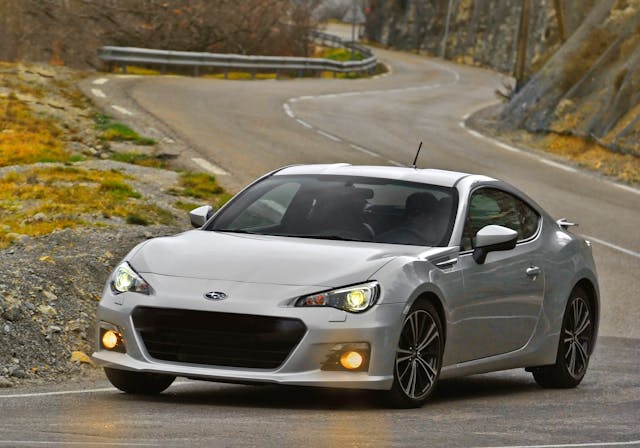
Toyota and Subaru hooked up in 2008 in a marriage of convenience when the Japanese giant took a 16.5 percent share of its smaller rival. After a four-year honeymoon period, their first offspring was a set of terrific twins: the Toyota GT86 (née Scion FRS, for the U.S.) and the Subaru BRZ.
Toyota did most of the design and engineering work, but the cars’ character came from their shared Subaru flat-four motor. Just the right amount of power and just the right amount of grip made the BRZ/GT86 siblings a hoot to drive and drift. The first generation lasted nine years with a follow-up arriving in 2021 that’s every bit as entertaining … with yet another name change for the Toyota, to GR86.
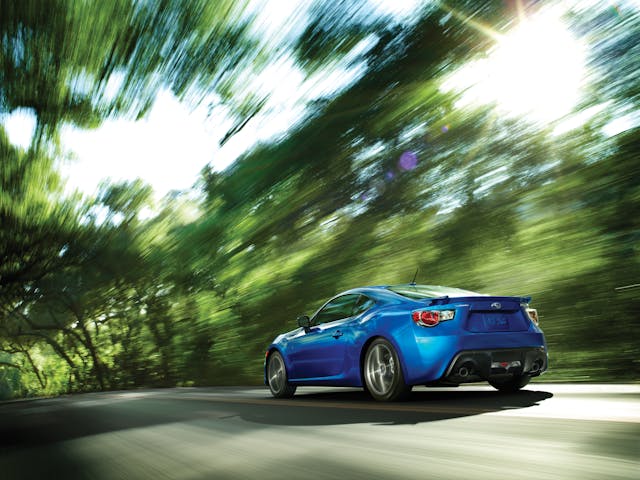
Lotus and Chevrolet

Lotus has been married and divorced more times than Donald Trump, having formal relationships with General Motors, Bugatti’s Romano Artioli, Proton, and now Geely.
During its seven-year hitch to GM, Lotus Engineering was brought in to work on a number of GM group products including the Isuzu Piazza Turbo, the Vauxhall/Opel Lotus Carlton, the Dodge Spirit R/T, and the C4 Chevrolet Corvette ZR-1. For the “King of the Hill,” Lotus designed a 5.7-liter, 375-hp aluminum block, quad-cam, 32-valve V-8, and installed adjustable Bilstein suspension to live up to the “handling by Lotus” moniker.
Mercedes and AMG
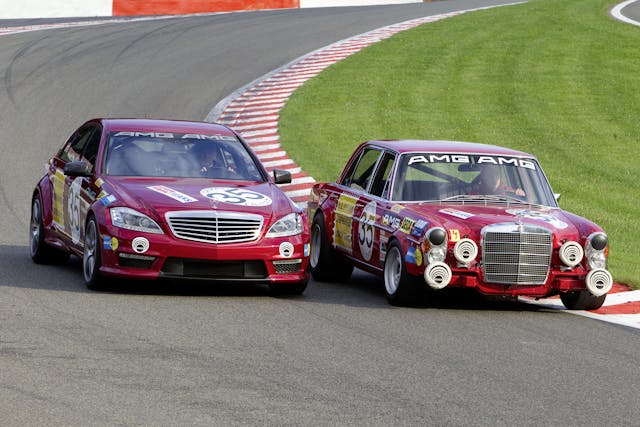
The story of AMG actually began inside 1960s’ Mercedes-Benz when Hans Werner Aufrecht and Erhard Melcher worked together on the 300 SE racing engine. They left to form their own business Aufrecht Melcher Großaspach in 1967 and by 1971 were world famous after their “Red Pig” AMG Mercedes 300 SEL won the 24 Hours of Spa.
Alongside continued racing success Aufrecht and Melcher moved on to tuning Mercedes’ road cars, developing their own engines from 1984. In 1990 the quality of AMG’s engineering was recognized by Mercedes and the pair signed a cooperation contract. In 2005 AMG was acquired by Mercedes leading to the in-house skunkworks that we know so well, thanks to cars ranging from the C36 to the wild One.
AC and Shelby
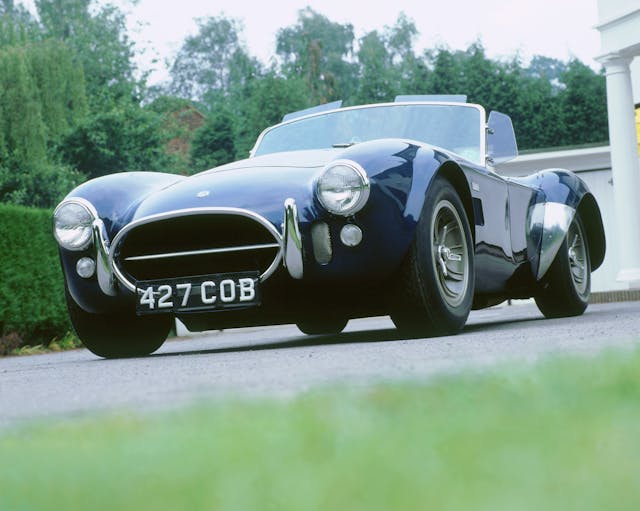
When this small British sports-car maker and all-American racer hooked up, there were fireworks. Carroll Shelby identified the little AC Ace as a potential race winner if it could just pack a bit more of a punch and enlisted Ford for a motorsports ménage à trois.
The Shelby Cobra and its small-block V-8 would make history at Le Mans, Daytona, Monza, and the Nürburgring, to name but three of its famous victories. In the 60 years since it was conceived, the Cobra has continued to be built on both sides of the Atlantic in numerous iterations. A legend that lives on and on.
McLaren and BMW
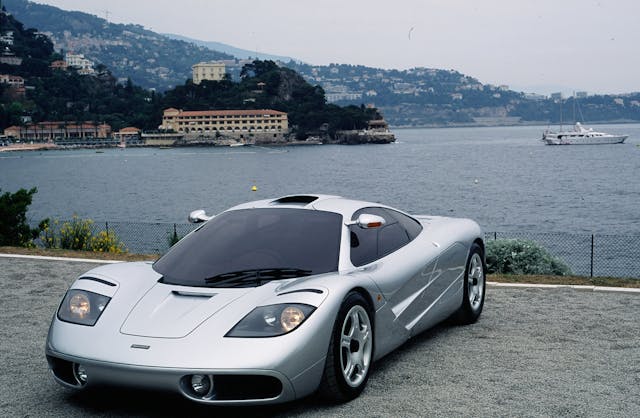
The story of the McLaren F1 has been told many times over, but if it weren’t for the relationship forged between Gordon Murray and Paul Rosche at BMW, would this midengine beast have been such a spectacular success?
Murray had been looking to the Formula 1 team’s engine supplier Honda to provide a V-10 but the collaboration didn’t work out. BMW’s M Division came to the rescue with a bespoke, 6.1-liter, 620-hp V-12, quite possibly the best engine ever built by the German brand.
Mercedes and Porsche

In the early days of Mercedes’ romance with AMG, the company was also conducting a one-car stand with Porsche. The result of this dalliance was the 500E, a high-performance version of the W124 E-Class, which was hand-assembled by Porsche.
It was powered by a five-liter V-8 from the SL roadster, with uprated brakes to cope, and building it was anything but simple. Each one had to be shuttled the 20 miles between Mercedes at Sindelfingen and Porsche in Zuffenhausen. Mercedes provided a kit of parts to which Porsche added the car’s flared front fenders, then the 500Es would be back to Benz for painting, before taking a last trip to Porsche for final assembly. It was a complicated arrangement, but made for one of the most exciting sedans of the early ’90s.
Porsche and Audi

Porsche’s affair with Mercedes fizzled out when the last 500E was built, but few rebound relationships produce better results than the RS2, which Porsche built for Audi on the same production line.
Porsche started with the sensible B4 Avant—and went all-out on its 2.2-liter five-cylinder engine. In addition to a bigger turbo and intercooler, plus uprated injectors, Porsche upgraded the powertrain’s cooling and induction and exhaust systems to justify the “Powered by Porsche” cast on the engine’s cam cover. Porsche-branded Brembo brakes sat behind Porsche Cup alloy wheels and the interior was given a retrim with Recaro seats and white instrumentation. Quattro AWD empowered the RS2 to hit 62 mph in just 4.8 seconds—faster, indeed, than the pure-blooded Porsches of the day.
Fiat and Mazda
New Mazda Miatas don’t come along often, just once a decade since the car’s 1989 debut, in fact. Even though the Miata had just hit the million mark, the Japanese knew they’d need a partner to help fund the fourth generation (interally known as the ND), launched in 2014.
Enter an international marriage between Japan and Italy. At first it appeared that Alfa Romeo was being wooed to build a new Spider, but in the event it was Fiat that accepted Mazda’s offer and so its 124 would be built alongside the Miata in Hiroshima. Mazda stuck with revvy normally-aspirated engines, and styled the car around its sleek Kodo Soul of Motion design language. Fiat opted for a turbocharged motor and a more retro look, ensuring that the siblings had quite different characters.
Dodge and Lamborghini
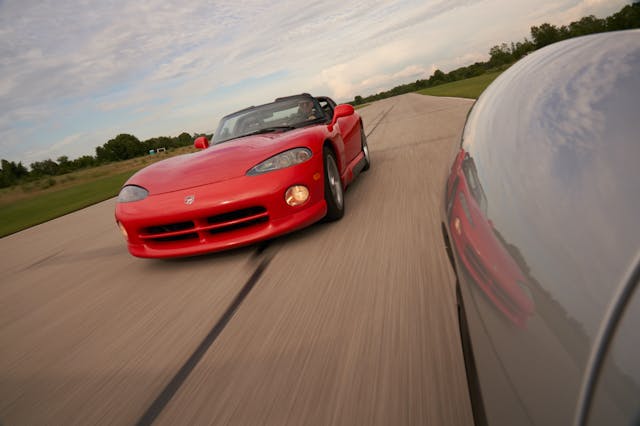
Lamborghini and the Chrysler group had a six-year attachment after the Americans came to the Italians rescue in 1987. Chrysler money ensured that the Countach got a replacement in the form of the Diablo, but there were strings attached. Chrysler used its exotic partner’s name on ill-conceived concept cars like the Portofino sedan and the Bertone Genesis minivan, but one very good thing did come out of the affair: the Dodge Viper.
Chrysler commissioned Lamborghini to transform an iron-block V-10 truck motor into an engine fit for a sports car. Recast in aluminum, Lamborghini’s eight-liter version produced 400 horsepower, giving the Viper the bite it needed. In fairness, it wasn’t a completely one-sided relationship, as the Diablo was penned by Chrysler’s Tom Gale, who also designed the Viper.
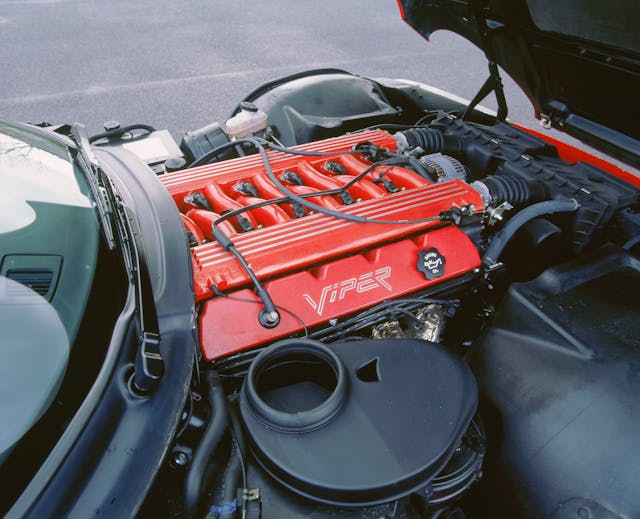
Ford, Volvo, and Aston Martin

Aston Martin couldn’t say no when Ford made a very decent proposal to take over the British brand in 1987. Arguably the most successful offspring of their decade together was actually the result of a throuple with Volvo.
For the 2005 V8 Vantage Aston Martin needed higher-end touchpoints than the Blue Oval had in stock, but the recent addition of the Swedish brand to Ford’s Premium Auto Group meant items such as the key and pop-up infotainment system could be sourced from the now-shared parts catalog. A three-way marriage of convenience, you might say.
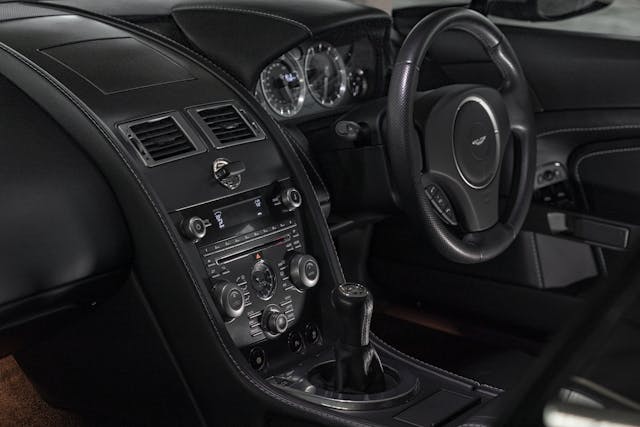
Check out the Hagerty Media homepage so you don’t miss a single story, or better yet, bookmark it. To get our best stories delivered right to your inbox, subscribe to our newsletters.

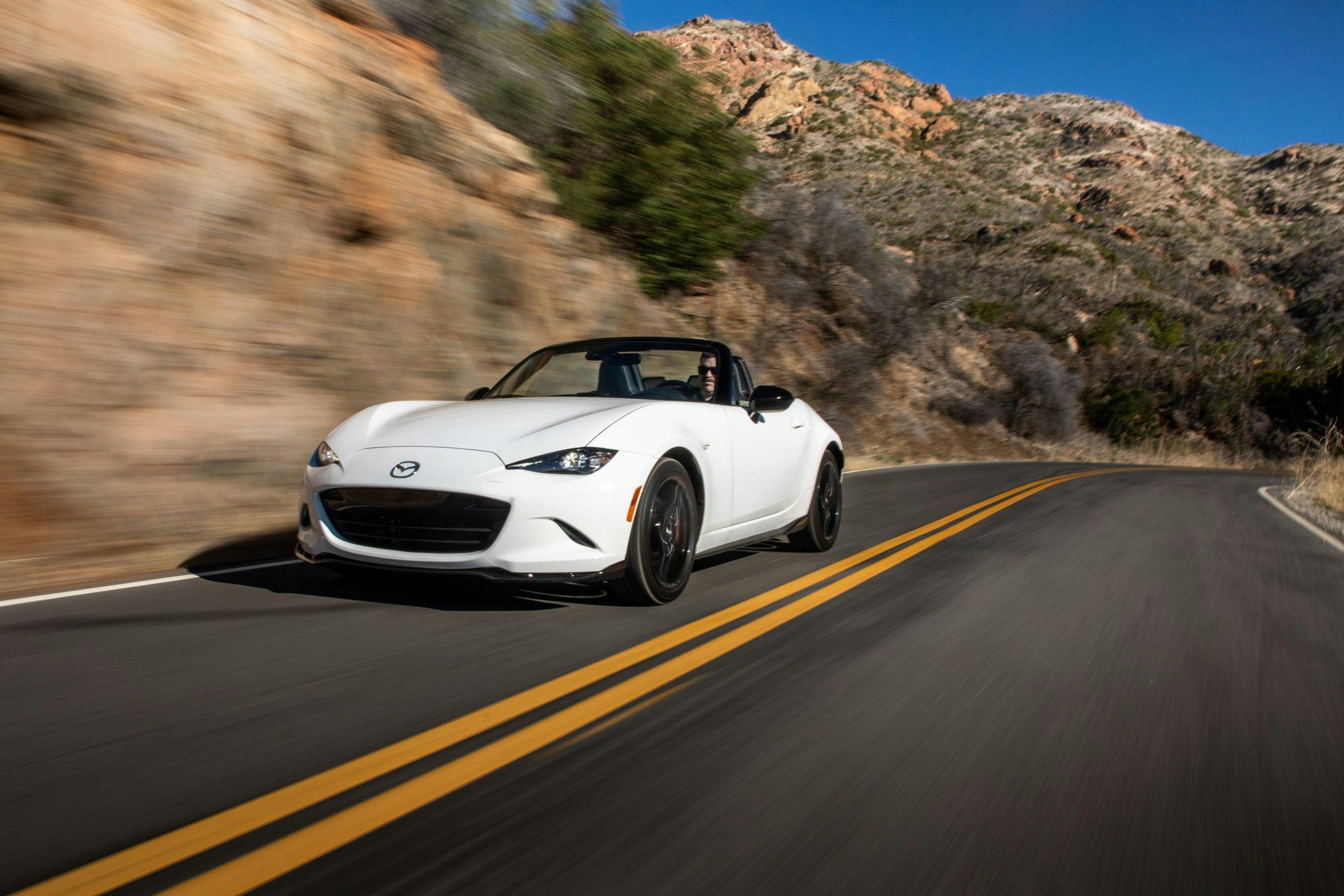



No Ford and Yamaha? That marriage made the beautiful Taurus SHO motor in the late 80’s. I enjoyed my 90′, 93′ and 95′!
No Toyota and Yamaha? Toyota’s greatest engines have a Yamaha connection just like the SHO motor.
You’re forgetting that the kids at Car and Driver hated the looks of the new Fiat 124. Don’t know why they felt that way, but that just reinforced my opinion of the magazine that has fallen since its glory days.
Recognizing that looks are subjective, I kind of think the Fiat looked a little better. It also rode better, I have heard, and some liked the handling better. The only real weak link seemed to be the Fiat engine.
Good one, Mike. I lusted after one (SHO) after getting my run-of-the-mill 1989……unrequited unfortunately.
Good one!
I had an 89 SHO. One of the best road cars I ever owned.
Before we knew each other, wife and I both had 90 SHOs and loved them. Worst part was the torque steer. Make sure its pointed where you want to go…
I agree wholeheartedly Mike. I had an 89 and a 92. That car was intended to compete with the likes of the BMW 5-series and did it very well. It may not have had the prestige factor, being a lowly Ford, but it certainly had the performance.
Good point.
I find some of this suspect.
Why does this site push the ZR1 Lotus and Corvette so much. It is like you want to drive up the prices on these? The car was a cool car but really became a problem for GM as the new small block had to be held back as it was cheaper and faster. The ZR1 is kind of like the Chevy 928. More cost to maintain than it is worth.
Mazda and Fiat? That one only helped Madza share the cost as the Fiat was a mess compared to the Miata.
The Subaru, Toyota was a mess as it was under powered and it has taken years to get it where it needed to be.
Ford Aston and Volvo. There were no winners there.
If you say Porsche Audi you need to add VW as it is there money that is funding this. Add Lambo and Bentley to this too.
McLaren and BMW was just the choice McLaren made. Not really a partnership.
Benz and AMG is a good paring.
Shelby and AC was a good pair too.
Too often partnerships are to save money and spread cost. Or they are an act to help save a dying company.
I am waiting to see what the GM, Honda brings. It is interesting here is that neither company was forced into this but both could see benefits from each other moving forward in what they sell, learn and sharing cost.
The best deal I recall was GM selling a transmission to BMW and BMW paid for it. Then after two years GM got full use for it. Smart move.
One many do not know is GM used Porsche Engineering to tune the 1988 Fiero suspension. GM designed it but GM used Porsche to tune the turn in and on center feel. So many made that Lotus was involved but I think that was to cover the fact Porsche was being used. Chevy at the time engaged with the Corvette racing Porsche in Show Room Stock.
Lotus designed engine, built by Mercury Marine, in a Corvette. Lots of “Not invented here” in that equation. The engine was never really developed, and then, the LS series of alloy small blocks came out later, eliminating the problems of servicing engines that really had no gaskets. Not really anyone’s fault, as, for a year or so, the LT5 DOHC Corvette was the hottest thing you could get.
The Subaru BRZ and Toyota FRS were not a “mess”. They were exceptionally fine handling, with an excellent driving position. They are still the only affordable small front engine, rear drive coups with perfect balance and impressive performance. The problem was that the engine was not fully developed, but lots of fine cars had engines that were not fully developed. Time and money fixes things though, and today’s BRZ and 86 have plenty of power, and a smooth torque delivery. I could live with either car, and have spend significant time in both. I prefer the latest version, ’cause you know, more power… As for “years” needed to fix them, think of the Corvette, after decades, finally becoming a proper mid engine super car. Finally, fixed.
Volvo and Aston Martin are about as successful as ever. Astons benefit from Volvo’s interpretation of Aston interior design, making them as warm as ever, with modern conveniences. Powerful Mercedes V8s don’t hurt, either, though the earlier Ford based V8s and V12s are still impressive engines. Of this menage, Aston clearly came out the major beneficiary. The proof is in the driving.
Volvo is abandoning IC engines all together, and will be successful because of that, especially considering all that Geeley money to properly develop the cars.
The rest of the “partnerships listed here are mostly sourcing components, such as McLaren using BMW to build a compact V12, or Shelby looking for a chassis for a small Ford V8, or was it A/C looking for an engine?
Rover wanted a small V8, and GM had one that it was tired of. I have a version of that marriage in my Morgan +8, and I am happy that it worked out. I don’t think that GM had much input, though, with either Rover, or Morgan, who sourced the former GM alloy block engine from Rover.
Today, most manufacturers share vendors for various assemblies, and Multimatic is now the main “go to” for ride and handling. I am thinking that maybe only Pagani is the only one that keeps just about everything in house, save for that Mercedes derived V12.
Who cares? So long as the car is fun, I don’t really care how it came about, so long as I can afford to buy and enjoy it.
👍
One, having a 90 ZR1 has never cost me anything special. Still own it. General maintenance. How many have you owned? It’s worth twice what I paid for it now. 2nd, we all see how the Fiero worked out. So much for that “tune”.
Buick engine to Rover…?
Fiat had longer wheelbase than the Miata I recall, so not really a direct compete either.
Jeep has been married off a few times now, and the suitor has always benefitted.
No, the Fiat and the Miata have the same wheelbase.
Buick was more an outright sale of old tooling vs partnership. Buick bailed on the engine and sold the tooling and rights.
Rover needed an engine and had little money to so it themselves.
Ford and Mazda!
Studebaker and Packard. Wait…maybe not.
A small fact early on with Caroll Shelby is he initially courted GM, Chevy specifically for their small block. It was further developed, more cubic inches than the SBF at the time. GM had “0” interest as they owned more than 50% of the market, and had their own sports car, Corvette. Ford power was second choice…..
“ During its seven-year hitch to GM, Lotus Engineering was brought in to work on a number of GM group products including the Isuzu Piazza Turbo, the Vauxhall/Opel Lotus Carlton, the DODGE SPIRIT R/T … “. That’s just a typo, right?
The AMG “Red Pig” never won the Spa 24 hours. In 1971 they came in second after the Ford Capri of D.Glemser and Soler Roig. Kind of David vs Goliath….
How about Mitsubishi and Chrysler? Conquest/Starion and Eclipse/Talon/Laser.
Might want to include Stealth/3000GT
Mercedes and Chrysler – Charger, Challenger, Jeep GC and the 6.2 liter Hellcat motor
BMW and Range Rover – Rover’s actually became more reliable but that’s not saying much.
Saab and GM
Ferrari and Alfa Romeo brought Alfa back to the US. You could argue that as a plus or negative 🙂
Yes, the Dodges and Jeeps with German bones…that seems to be one of the most popular and successful offspring of late…turned the Grand Cherokee into a proper luxury SUV that didn’t feel like a rollover accident waiting to happen.
Chrysler and Daimler-Benz? Wouldn’t have the mighty Charger and Challenger we enjoy to this day. (numbered days)
CrossFire came out of this as well
The world would be better off forgetting the Crossfire… Chrysler has.
…and the cab over design technology seen in nearly every MBZ since.
how about Jeep Grand Cherokee and MB and or Dodge Charge/Chrysler 300 and MB
Fun article – would have been nice to honor the Austin company and Donald Healey motor company duo. Healeys won at Le Mans, were successful European rally cars in the 60s and set world speed records at Bonneville.
🚙
Here, here! Also good to include John Cooper and British Motor Company.
The Austin Mini Cooper S is still a great ride!
There is also Chrysler and Mitsubishi joint venture creating Diamondstar Motors with plant opening in 1988 producing Mitsubishi Eclipse, Eagle Talon, Plymouth Laser sports cars and 4 door Mitsubishi Mirage, Plymouth Colt, Eagle Summit . In competence on both sides wrecked that over the course of several years until Chrysler was out in early 90’s and Mits. closing the plant in 2015. GM and Toyota (NUMMI) produced the GM badged Toyota clones: Chevy Nova, Geo Prism, Pontiac Vibe. There were lots of others. Chrysler joined and took over AMC to get the Jeep name.
I had a ’90 Mitsubishi Eclipse, ’97 Mitsubishi Eclipse GSX and a ”92 Eagle Talon TSi AWD. Great cars. Neither Mitsubishi nor Chrysler have equaled those compact affordable coupes since.
I loved the old Starion/Conquest twins. Such fun and good looking cars.
Excellent…I knew that Porsche was in tin the 500E but didn’t know to what extent..Interesting point that it took Lexus LS400 to light a fire under Mercedes ass to produce such a great car..
E.L. Cord and the Duesenberg Brothers. The result, the Duesenberg Model J and SJ.